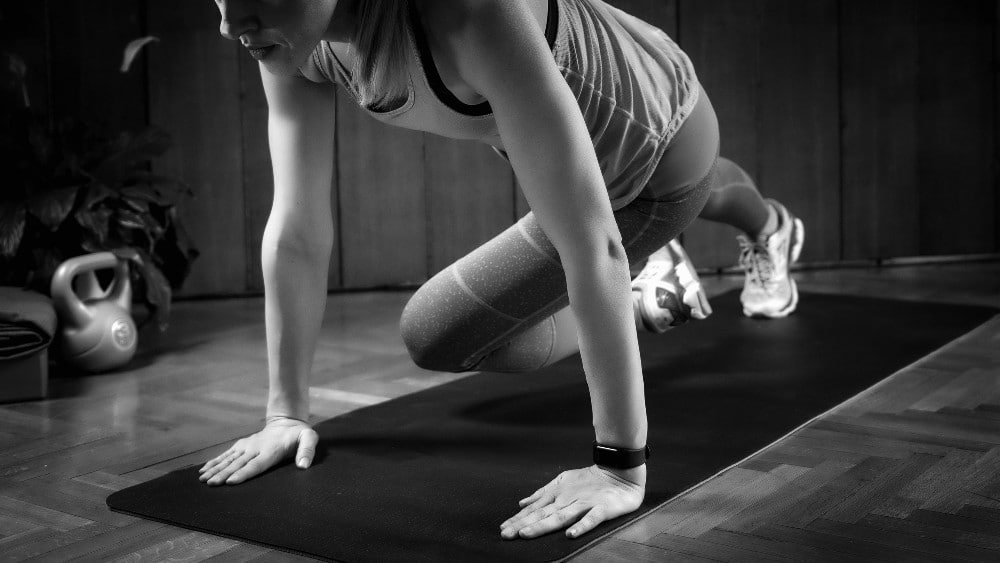HIIT Stands For High Intervals Training
Now that we know what HIIT acronym stands for, we can go into greater depths to understand what it really involves. HIIT involves brief repeated bouts of high intensity exercise with intermittent recovery periods. It is a time efficient alternative to typical continuous endurance exercise. A typical HIIT session can be up to three times shorter than a regular continuous exercise! The health benefits of HIIT are similar to continuous endurance workouts but in a significantly shorter time frame. HIIT programs are often seen as more enjoyable and motivating compared to continuous exercise programs.
What Are the Benefits?
HIIT is considered a very efficient exercise regime for showing improvements with:
- Aerobic and anaerobic fitness
- Blood pressure
- Cardiovascular / cardiopulmonary health (heart and lungs)
- Insulin sensitivity (which helps the exercising muscles more readily use glucose for fuel to make energy)
- Cholesterol levels
- Decreased abdominal fat and body weight
- Increased / maintained muscle mass
More About HIIT Training
HIIT training can be considered one of the most effective forms of exercise for improving overall physical performance. High intensity interval training typically incorporates either running or cycling based types of exercise but can include a multitude of other exercise types. It can be performed with other exercises, including walking, swimming, aquatics-based training, rowing, elliptical, and in group exercise classes. Because of this HIIT training can easily be modified for people of all fitness levels and health conditions!
The higher intensity portions of exercise can range 5 seconds to 5+ minutes (depending on the energy system you are targeting and/ or your personal preference). These phases are performed at 80-95% of a person’s estimated maximal heart rate. The recovery periods may last the same amount of time as the work periods (5 seconds to 5+ minutes) and are usually performed at 40- 50% of a person’s estimated maximal heart rate. This type of training can range from 20 minutes to 60 minutes in length. If you find you are struggling to find time for workouts this may be the type of training for you!
Calculating Estimated Maximal Heart Rate
Estimated maximal heart rate is an estimate of the maximum number of times your heat will beat in one minute without overexertion. This can be calculated easily using your age! To estimate your maximum age-related heart rate, subtract your age from 220.
Example #1 for a 24 year old the estimated maximum age related heart rate would be calculated as 220-24= 196 beats per/ minute (bpm).
Example #2 for a 55 year old the estimated maximum age related heart rate would be calculated as 220-55= 165 beats per/ minute (bpm).
Variables Of HIIT
HIIT programs are great because they are easily customizable to every individual’s fitness levels and goals. As well as they can be performed in a shorter period of time.
Some ways to make it more suited to your fitness goals include changing the following:
Increasing/ decreasing the intensity of the active portion of each round
Increasing/ decreasing the duration of the active portion of each round
Increasing/ decreasing the intensity of the recovery portion of each round
Increasing/ decreasing the duration of the recovery portion of each round
Increasing/ decreasing the number of rounds performed in each set
Increasing/ decreasing the number of sets
Increasing/ decreasing the rest time between sets
Increasing/ decreasing recovery intensity between sets
Modes of exercises used for HIIT
With this in mind we know that the relationship of the work and recovery interval is important. Depending on the specific ratio of exercise to recovery to you will be working different energy systems in the body. A common example is a ratio of 1:1 might be 2 minutes of higher intensity hard work followed by a 2 minute lower intensity recovery period. These 1:1 interval workouts often range about 2, 3, 4, or 5 minutes followed by an equal time in recovery. Another common HIIT training example is called the ‘spring interval training method’. With this type of program, you will do about 30 seconds of near maximum effort exercise, which is followed by 4 to 5 minutes of recovery. This combination of exercise can be repeated 3 to 5 times (or more if you so choose).
Who Is It Appropriate For?
HIIT programs have also been shown to be safe for older adults, children, athletes and anyone with health concerns (heart disease, diabetes etc). Of course, medical clearance from your physician is recommended as a safety measure for anyone with these conditions before starting HIIT or any exercise training in general. To make it safe when performing HIIT training, it is important to modify the intensity of the work interval to your own fitness levels. Keeping it safe is a priority so make sure you are catering to your fitness levels and not trying to keep up with other people.
Another good tip before beginning HIIT training is to establish a basic foundational level of fitness. A base fitness level can be considered consistent aerobic training (3 to 5 times a week for 20 to 60 min per session at a mild-moderate intensity) for several weeks to produce proper muscular adaptions (strength/ form) therefore reducing the risk of injury when starting HIIT programs.
Example of a beginner program that take approximately 10 minutes
3 rounds of 20 second work with 10 to 20 seconds rest
#1 Arm circles -forwards/ back
#2 Jumping jacks or Stationary marching
#3 Wall angels
#4 Squats or Sit to stands (sitting down on chair and standing back up)
Example of A More Advanced Program That Takes Approximately 30 Minutes
3 rounds of 45 sec work with 15 to 20 seconds rest
#1 Pushups/ Wall pushups
#2 Squats
#3 Jogging/ Jogging on the spot / Step-ups
#4 Triceps dips
#5 Lunges/ Multidirectional lunges
#6 Jumping jacks/ Skipping
#7 Sit-ups
Our kinesiologists can design a custom HIIT program aimed at meeting your fitness goals. Click to BOOK AN APPOINTMENT ONLINE.








